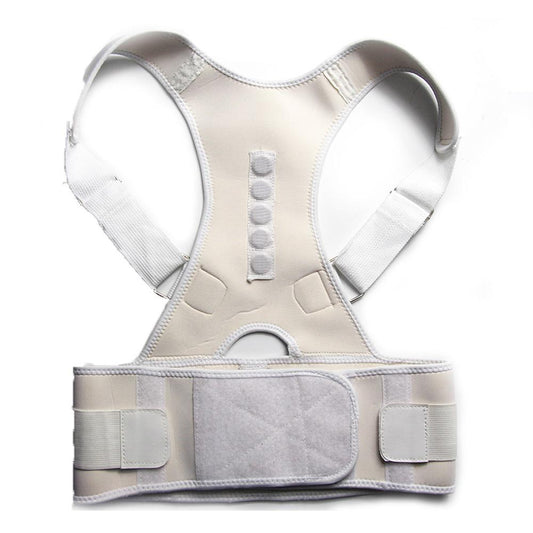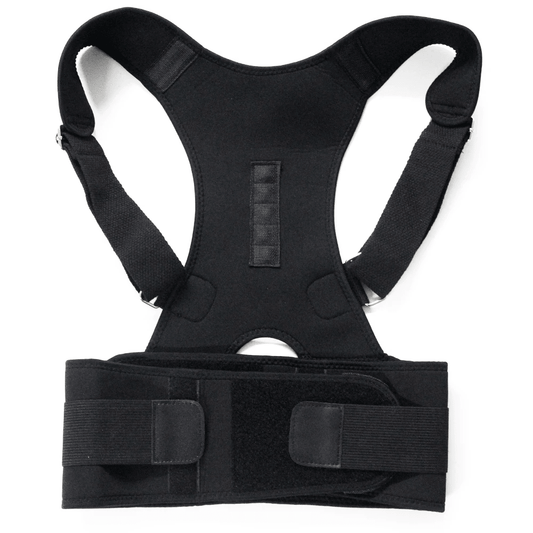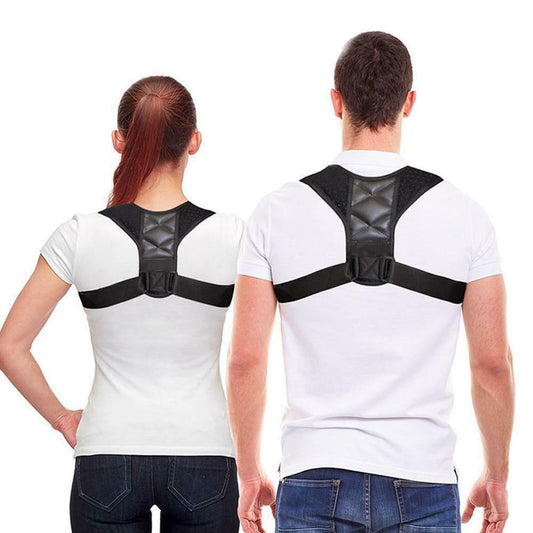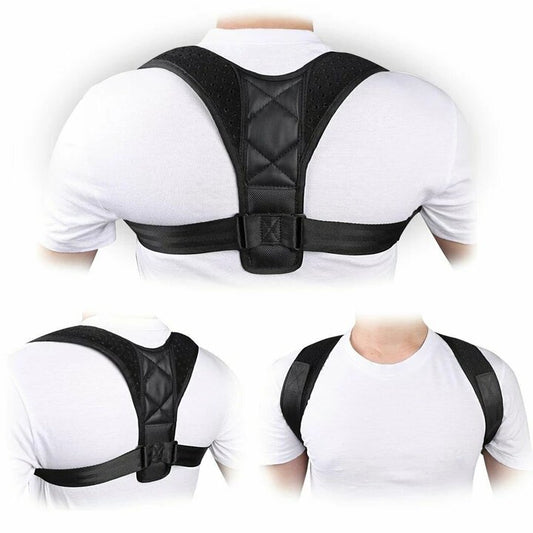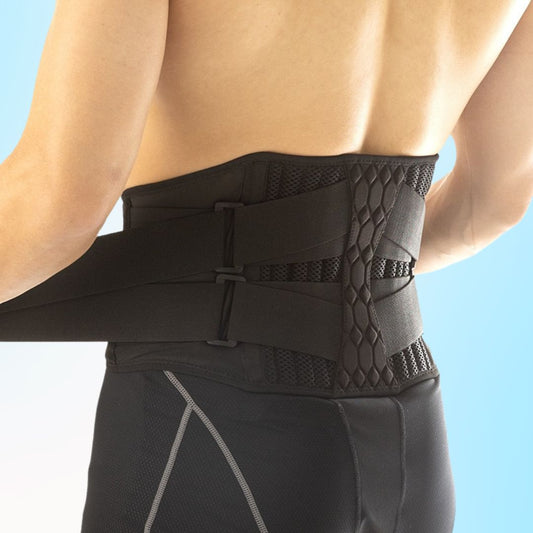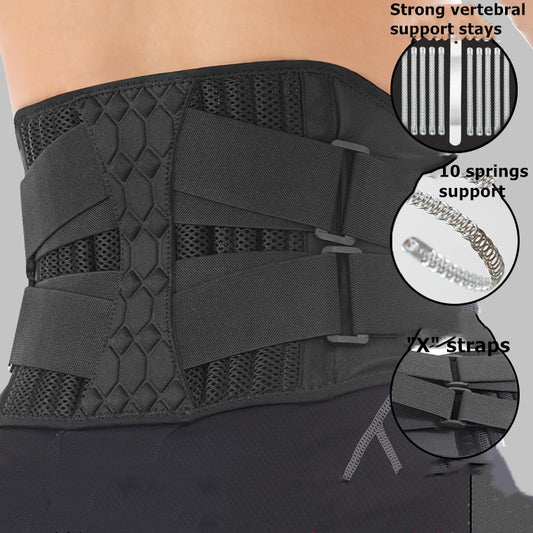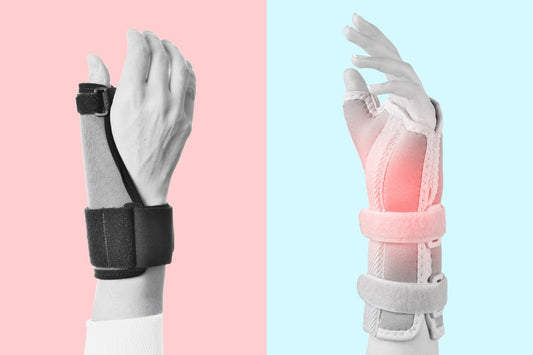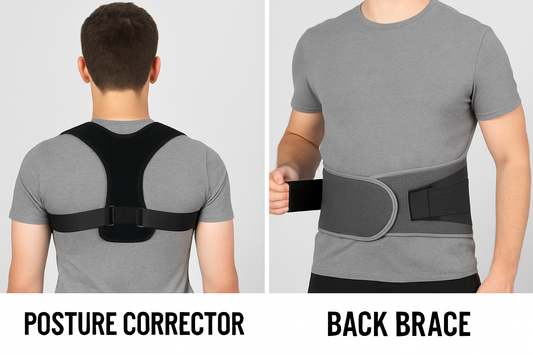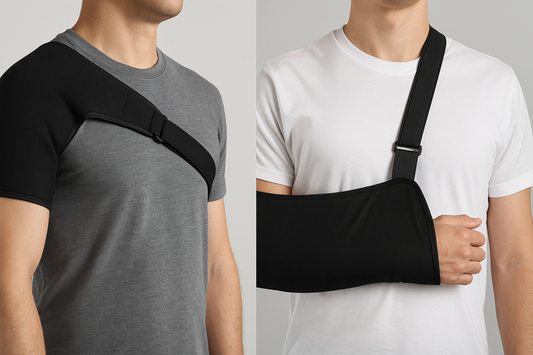Back pain and poor posture are common problems in today’s world, especially with long hours spent sitting or working at desks. Two common devices often recommended are posture correctors and back braces. At first glance, they may look similar, but they serve very different purposes.
So how do you know which one is right for you?
Posture Corrector vs Back Brace: Are They the Same?
Not exactly. A posture corrector is technically a specific type of back brace, but not all back braces are posture correctors.
- A posture corrector is designed to gently pull your shoulders back and encourage healthy spinal alignment. Its main role is habit training rather than medical immobilization.
- A back brace is a broader category. It includes many types of braces — from lightweight elastic supports to rigid orthopedic devices — used for conditions like herniated discs, scoliosis, or post-surgical recovery.
👉 Think of it this way: All posture correctors are back braces, but not all back braces are posture correctors.
Key Differences Between a Posture Corrector and a Back Brace
| Feature | Posture Corrector | Back Brace |
|---|---|---|
| Design | Lightweight straps or elastic harness | Wide range: elastic belts to rigid supports |
| Support Level | Light correction, muscle training | Moderate to strong stabilization |
| Mobility | Allows natural movement, gentle reminder | May restrict motion to protect the spine |
| Primary Purpose | Builds better posture habits | Medical support for pain, injury, or recovery |
| Comfort | Slim, discreet, wearable under clothes | Bulkier, more noticeable, can feel restrictive |
| Duration of Use | Short daily sessions to retrain posture | Short- to medium-term medical use |
When to Use a Posture Corrector vs a Back Brace
Posture Corrector
A posture corrector is made with lightweight straps or elastic bands that sit across the shoulders and upper back. Its goal is to gently guide the body into healthier alignment and retrain muscles over time.
Ideal for:
- Office workers and students who slouch during long hours at a desk
- People with rounded shoulders or forward head posture
- Mild upper back or neck discomfort linked to poor posture
- Preventive care to avoid long-term posture-related strain
- Daily training in short sessions (20–60 minutes) to build awareness without dependency
Back Brace
A back brace provides stronger stabilization, often for the lower back, and is commonly prescribed in medical settings. Some are flexible and compressive, while others are rigid and limit spinal motion almost entirely.
Ideal for:
- Herniated or bulging discs
- Severe lower back pain
- Post-surgical recovery of the spine
- Spinal instability or scoliosis
- Heavy lifting or occupational strain where added support is needed
Can They Be Used Interchangeably?
Generally, no. Posture correctors and back braces serve different purposes:
- A posture corrector won’t provide the rigid stabilization needed for serious conditions like fractures or herniated discs.
- A back brace isn’t meant for habit training and can even weaken muscles if worn unnecessarily for posture alone.
That said, the two can complement each other. For example, someone might wear a back brace during recovery from spinal surgery, and later use a posture corrector to prevent slouching once they return to normal activity.
The key is understanding that these devices are complementary, not substitutes.
How to Decide Between a Posture Corrector and a Back Brace
-
Identify your primary goal:
- Want to improve posture, reduce slouching, or train better habits → Posture corrector.
- Need medical support for pain, injury, or surgery → Back brace.
-
Consider your lifestyle:
- Correctors are discreet, light, and easy to wear under clothing.
- Braces are bulkier but essential for protection in clinical or high-strain situations.
-
Think about long-term use:
- Correctors are for prevention and training, not all-day wear.
- Braces are for short- to medium-term support during recovery.
-
Seek medical advice when in doubt:
- If you have chronic back pain, suspected injury, or are post-surgery, a healthcare provider should guide the decision.
Posture Corrector vs Back Brace: The Bottom Line
When comparing a posture corrector vs back brace, the key difference is correction versus protection.
- A posture corrector is a lightweight training tool to guide you into better alignment and build healthier posture habits over time.
- A back brace is a medical device used for stabilization, protection, and recovery in cases of serious pain, injury, or surgery.
They are not interchangeable — but they may be used at different stages of a person’s journey toward a healthier back. For most people wanting to improve posture, a corrector is the right choice. For those recovering from significant injuries or conditions, a back brace provides the level of support needed to heal.
The best approach is to choose based on your specific condition and goals — and consult a healthcare professional if you’re unsure which one your back truly needs.


